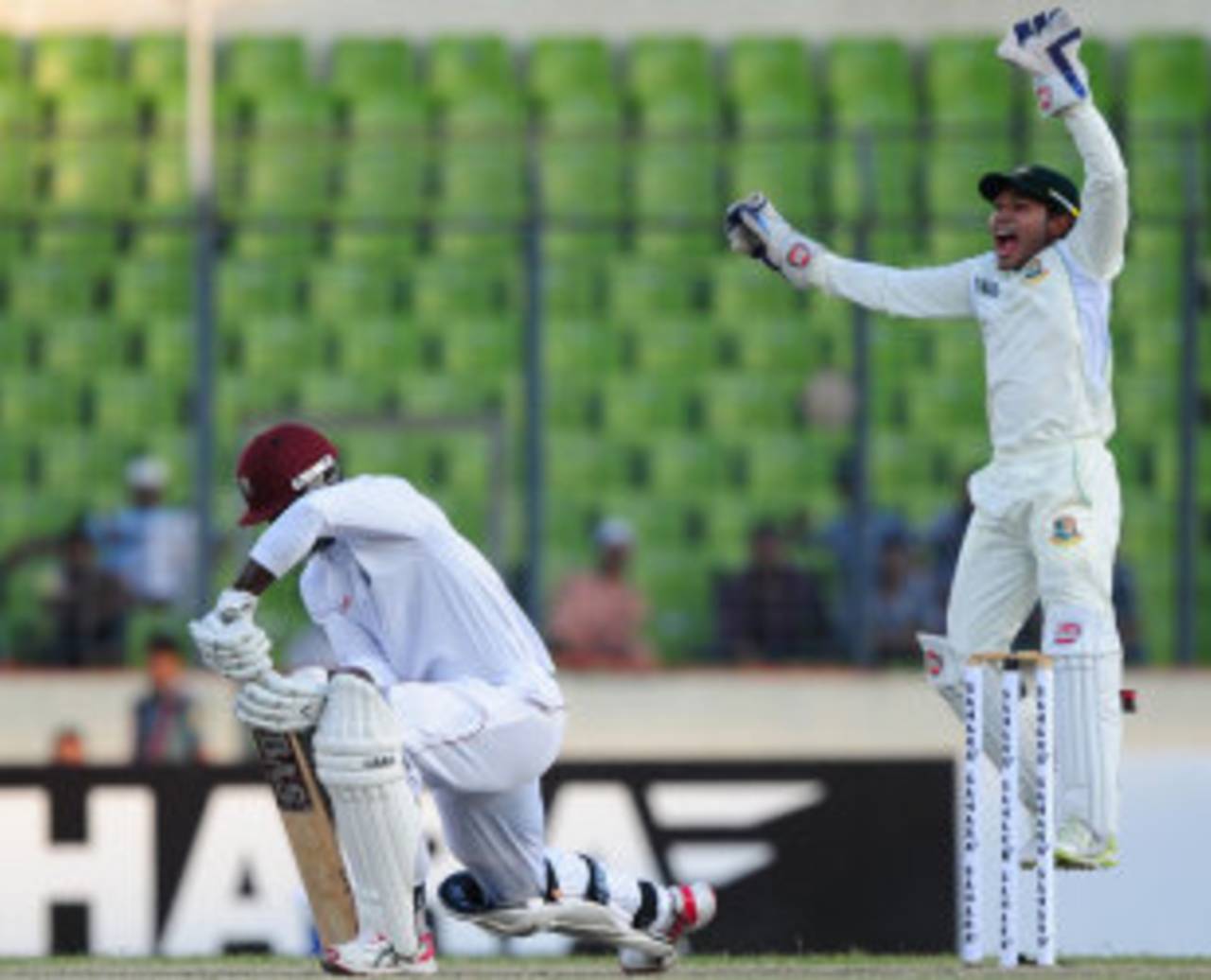Allow lbws outside off even if the batsman offers a shot
Too many players escape being dismissed by pretending to play the ball
Nitin Sundar
31-Mar-2013

How is an umpire to judge what constitutes "an attempt to play a shot"? • AFP
The lbw law, with all its clauses and complex quirks, is perhaps the most colourful sub-chapter in cricket's rule book. It is also the most stringent yardstick with which to judge an umpire's - or a fan's - pedigree. Behind the layers of complexity, though, Law 36 is also a logical and cogent set of rules. One part, however, doesn't quite add up.
Assume the following scenario on a wearing pitch affording a lot of spin: An offspinner delivers from over the stumps, wide of the crease, and lands the ball a good three feet wide of off stump, a smidgen short of driving length. The right-hand batsman lunges forward from the crease, aware that he can't get to the pitch of the ball and that the offbreak is going to turn in sharply. Silly point and short leg crouch in attendance, waiting for the edge.
The batsman figures two options. One, offer his front pad and shoulder arms, a response that will negate the close-in fielders but could leave him plumb if the ball turns in sufficiently. Option two is more practical, to lunge ahead with bat and pad close together, hoping to play with the bat, but with the security of the pad to protect the stumps.
For the sake of our little exercise, let's ignore whether the batsman played a shot or not. All we know is that he was hit on the pad, a full foot outside the line of off stump, no bat involved. Let's take the DRS out of the equation: everyone involved knows for a fact that the ball is headed for the middle of middle.
As Law 36 stands, the umpire's ruling depends on whether the batsman was making a "genuine attempt to play the ball with his bat". The law, however, doesn't explain why this is of import. It also leaves the judgement of what constitutes a genuine attempt to play the ball squarely on the umpire.
In plainspeak, this is what the law tells the bowler when the impact is outside the line of the stumps: We know you have beaten the bat. Yes, the ball is headed for the stumps. We are aware that the batsman has, in effect, used his pad (or some part of his body) to protect his stumps. Yet, you won't get the wicket, since the batsman was attempting to play a shot when he was beaten. Deal with it.
It's bad enough that the law protects a beaten batsman on the curious premise that he was attempting to play a shot. What makes matters worse is that batsmen - especially in the non-DRS part of the world - can get away with merely pretending to play a shot. Lean forward, push the pad outside the line of the stumps, hide the bat safely behind, and pad the ball away - can it get any easier? Umpires are far less likely to rule in a bowler's favour when this happens than when the batsman blatantly avoids playing a shot. Commentators and spectators, too, tend to be more lenient towards the pretend-shot than the shouldering of arms.
What constitutes a fair attempt at shot-making is debatable at the best of times. Interestingly, it is a call that the umpire doesn't have to make "if the point of impact is between wicket and wicket". A batsman can be out lbw even if he is playing a shot, as long as he is hit in line with the stumps. The more prodigiously a bowler deviates the ball sideways, the more likely he is to pass (and beat) a batsman outside the line of the stumps, than a bowler who spins it less. In other words, a batsman playing a shot is more likely to be out lbw to an arm ball (or a topspinner) than to an offbreak (or legbreak).
Why this discrimination against the bigger spinner of the ball? Again, the MCC manual doesn't throw light.
Perhaps, back in the day of uncovered wickets, this law gave batsmen some respite on pitches with unpredictable cut and seam. That day is well and truly in the past. Today, a bowler has to deal with short boundaries, big bats, flat pitches, and a bunch of other developments that pamper the batsman. It might be a good time to ease the bowler's burden by deleting the "attempting a shot" clause altogether. To save a batsman for attempting a shot is to reward him for intention rather than action.
Nitin Sundar is a social media manager at ESPNcricinfo